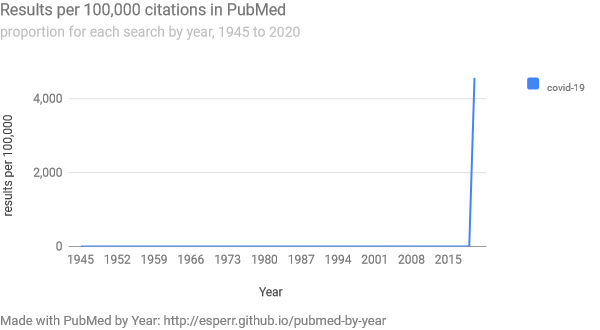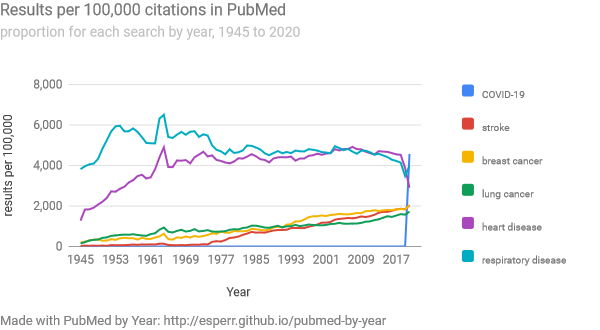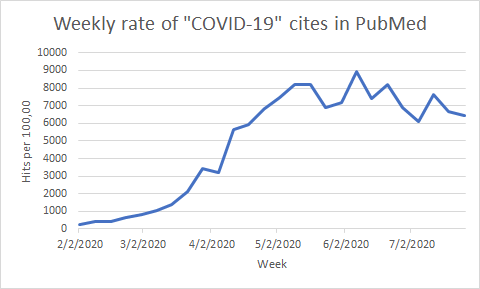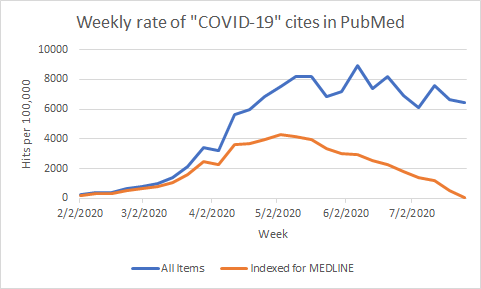Trends in COVID-19 Publications
The recent emergence of COVID-19 has led to a flood of publications about it (as well as SARS-CoV-2) in the biomedical literature. Indeed, items found with the PubMed term “COVID-19” (which is still probably the best single term to use have gone from nothing a year ago to a bit over 4.5% of all PubMed citations for 2020.

If there is any question of how significant that number is, note that this is well higher than the yearly rate for stroke, breast cancer or lung cancer. COVID-19 cites are now in the same neighborhood as those for heart and respiratory diseases.

Of course, a yearly average is just that – it might be difficult to truly get a sense of this onslaught when we’re averaging June and July together with February, when COVID-19 items were (relatively) sparse. If instead, we search on the PubMed record creation date and take the proportion of COVID-19 items created in a given week to the rest of PubMed, we get a more granular view of what’s going on. Now we can see that production peaked (so far) in early June, when COVID-19 items made up nearly 9% of the total.

Of course, medical librarians and other experienced PubMed users will know that full indexing of items for MEDLINE takes time. If we compare all COVID-19 items to those that are in the “medline” subset, we see that many items (particularly the most recent) have yet to be indexed.

This has serious ramifications for the construction of PubMed search strategies, as medical subject headings can’t be used to find unindexed items.